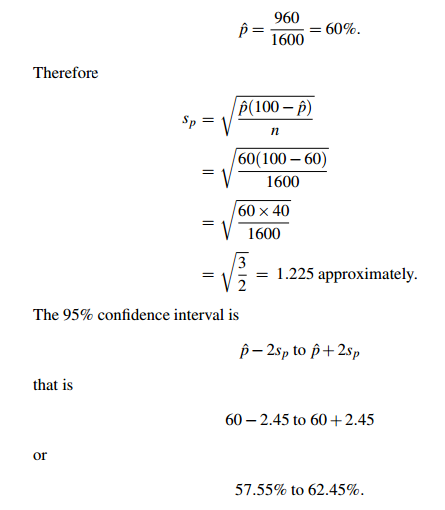

تاريخ الرياضيات

الاعداد و نظريتها

تاريخ التحليل

تار يخ الجبر

الهندسة و التبلوجي


الرياضيات في الحضارات المختلفة

العربية

اليونانية

البابلية

الصينية

المايا

المصرية

الهندية


الرياضيات المتقطعة

المنطق

اسس الرياضيات

فلسفة الرياضيات

مواضيع عامة في المنطق


الجبر

الجبر الخطي

الجبر المجرد

الجبر البولياني

مواضيع عامة في الجبر

الضبابية

نظرية المجموعات

نظرية الزمر

نظرية الحلقات والحقول

نظرية الاعداد

نظرية الفئات

حساب المتجهات

المتتاليات-المتسلسلات

المصفوفات و نظريتها

المثلثات


الهندسة

الهندسة المستوية

الهندسة غير المستوية

مواضيع عامة في الهندسة

التفاضل و التكامل


المعادلات التفاضلية و التكاملية

معادلات تفاضلية

معادلات تكاملية

مواضيع عامة في المعادلات


التحليل

التحليل العددي

التحليل العقدي

التحليل الدالي

مواضيع عامة في التحليل

التحليل الحقيقي

التبلوجيا

نظرية الالعاب

الاحتمالات و الاحصاء

نظرية التحكم

بحوث العمليات

نظرية الكم

الشفرات

الرياضيات التطبيقية

نظريات ومبرهنات


علماء الرياضيات

500AD

500-1499

1000to1499

1500to1599

1600to1649

1650to1699

1700to1749

1750to1779

1780to1799

1800to1819

1820to1829

1830to1839

1840to1849

1850to1859

1860to1864

1865to1869

1870to1874

1875to1879

1880to1884

1885to1889

1890to1894

1895to1899

1900to1904

1905to1909

1910to1914

1915to1919

1920to1924

1925to1929

1930to1939

1940to the present

علماء الرياضيات

الرياضيات في العلوم الاخرى

بحوث و اطاريح جامعية

هل تعلم

طرائق التدريس

الرياضيات العامة

نظرية البيان
Polls
المؤلف:
W.D. Wallis
المصدر:
Mathematics in the Real World
الجزء والصفحة:
72-74
15-2-2016
2340
Suppose the University wants to estimate satisfaction with a new course. They might choose a sample of 200 students and ask them whether they enjoyed the course. Say 46 of the students say they enjoyed it. These 46 students are 23% of the sample, so we call 23% the sample proportion. The percentage of students who actually enjoyed the course is called the population proportion. Assuming the sample of 200 students was unbiased, the University’s best guess for the population proportion is 23%.
In this example, a number of people were asked to give an opinion. This is called an opinion poll. These are very often used to evaluate products, test public opinion of political candidates, and so on. A random sample is chosen and the sample proportion is found. This is the best guess as to the population proportion, and of course it is important to know how confident one can be of the result.
Assume we are discussing a proportion (such as “proportion voting for a candidate” or “proportion voting yes”) and estimating it by sampling. We shall write p for the population proportion, and ˆp (“p-hat”) for the corresponding sample proportion. It will be convenient always to write these as percentages.
If you count 1 for each “yes” and 0 for each “no,” p is the population mean and pˆis the sample mean. So pˆ has approximately a normal distribution, and ˆp is the best estimator of p.
If the sample size is n, then ˆp has mean p and standard deviation σp, where it can be shown that approximately

(This approximate standard deviation is quite accurate for large n, for example if n is at least 1,000.)
The best estimate for this standard deviation is

So we assume that there is a 95% chance that p lies in the range from pˆ− 2sp to pˆ +2sp.
Sample Problem 1.1 In a survey of 1600 voters, 960 say they intend to vote Democrat at the next election. What is the 95% confidence interval for the percentage of voters who will vote Democrat?
Solution. In this case n = 1600 and

(This is often written as 60±2.45%.)
If there had been only 100 people in the survey, sp would have been 4.9, and the 95% confidence interval would have been
50.2% to 69.8%.
—not nearly so accurate.
There is another way of thinking about the 95% confidence level, which may give you a better idea of what it means. Suppose you went through the process of finding the 95% confidence interval for every possible sample. Then in 95% of cases the true population parameter value (mean, proportion, or whatever) would lie in the interval.
Notice that the size of the confidence interval depends on the parameter (the percentage voting yes, for example) and on the sample size, but not on the population size. In the example, the sample size 1600 was equally reliable if there were 18,000 voters or 180,000,000. This may go against your intuition, but it is a fact.